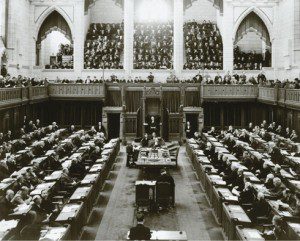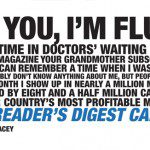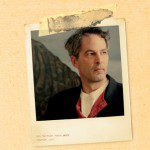The 140-Year War
A close look at the warriors, battlegrounds and legends of a Canadian institution: the Parliamentary Press Gallery
 Sitting in the House of Commons, above and behind the Speaker’s chair, I’m enjoying the 50-yard line view reporters get of all the debating and name-calling in federal politics. It’s Monday, October 30, 2006, and Speaker Peter Milliken declares “case closed” on the Peter McKay-Belinda Stronach “dog-gate affair.” But I’m not here just for the floor show. I’m investigating the action, or lack thereof, in the Parliamentary Press Gallery itself.
Sitting in the House of Commons, above and behind the Speaker’s chair, I’m enjoying the 50-yard line view reporters get of all the debating and name-calling in federal politics. It’s Monday, October 30, 2006, and Speaker Peter Milliken declares “case closed” on the Peter McKay-Belinda Stronach “dog-gate affair.” But I’m not here just for the floor show. I’m investigating the action, or lack thereof, in the Parliamentary Press Gallery itself.
Earlier in the day, I picked up the blue pass announcing my temporary membership, and found my way into what is now an institution, with a high-profile cast of characters and a host of practices—such as the daily scrum—unique to Canadian journalism. CBC veteran Don Newman, the Toronto Star’s Susan Delacourt and The Globe and Mail’s John Ibbitson are my colleagues now, although I don’t see them at the moment. In fact, back up in the gallery, I’m all alone. I’m early. I choose a seat with a missing brass nameplate—hoping not to antagonize any of my new colleagues—and wait patiently for question period to begin. I watch Members of Parliament come in from numerous entrances. They’re chatting, engaged in one of those rare moments of non-partisanship. Quorum, the daily clipping service that compiles articles from newspapers across the country, is tucked under many arms. The MPs arrange themselves at their desks and send pages scurrying for water. As the seats in the House fill, some reporters find their way to the gallery.
It’s not quite the lively crowd of a century ago, when reporters from their respective, and very partisan, newspapers would gather in large numbers all day, dutifully taking notes and sending their own pages scurrying for water. On this day in October 2006, only about a dozen of the nearly 400 members of the Gallery will make their way to the House. That’s because cpac and transcripts have made attendance less than mandatory. Those in the gallery adjust their earpieces and glance back and forth between the scene below and their BlackBerrys.
Walking under the Peace Tower to go to work every day is a career milestone for many journalists, but the Parliament Hill beat certainly isn’t easy. Political reporters work long hours, struggle to cut through spin and cultivate reliable inside contacts, while safeguarding against charges of bias—all this in a place where news travels as fast as gossip among 13-year-old girls.
Hill journalists are a varied group, with many different roles and deadlines. The formula for success depends on whom you ask. Reporters say doing a good job in Ottawa means always being available and underfoot. Columnists and pundits, on the other hand, are more likely to say they ignore the government’s daily agenda and spend their time digging deeper into the issues. For some reporters, attending question period and scrums is vital, for others it’s going to the right parties, and for many, it’s spending not-so-glamorous quality time with books, policy papers and access-to-information requests.
Progressive Conservative Party leader John Diefenbaker in a scrum during the 1964 Great Flag Debate
One thing is certain, as long as Canada has had a Parliament, journalists have been watching and reporting on the political game. What started as a fiercely insular group of elite newspaper men is now a large, diverse association of journalists from the print, broadcast, magazine and online media � a brave new world where competition means both getting it first and getting it more in-depth.
In 1916, fire destroyed most of the Hill’s buildings and with it, much of the Gallery’s early history. The Gallery started years before 1867, but was formally “founded” at the time of Confederation. Pictures of Hill reporters from the 19th century show a small group of middle-aged white men smartly dressed in suits and ties—the first female reporter to be awarded an official gallery picture was Genevieve Lipsett-Skinner in 1933. Only daily newspaper reporters could be members, a rule that persisted in large part until 1959, when the gallery, under increasing pressure, changed its constitution and offered full membership to all broadcasters, magazine writers and other news reporters who filed less frequently. Previously, writers for publications such as Saturday Night and Maclean’s were grudgingly accepted as associate members. Broadcast journalists didn’t have access to the House and other areas of Parliament—in part because the “Old Boys club” earned extra money freelancing for radio and television.
Today, the Gallery is a loose association of journalists who look to the elected executive for administrative support—such as setting up press conferences—and to act as their unified voice on issues such as the current prime minister’s access-limiting media policy. Yves Malo became the current Gallery president in April 2006. His duties include holding one general meeting each year, fielding phone calls and organizing the famously-lively annual dinner. A TVA reporter from Montreal, Malo quickly realized the presidency wouldn’t be the “walk in the park” his colleagues had once suggested.
When the Conservatives won the January 23, 2006 election, the party entered office with a deep animosity toward the Gallery. Prime Minister Stephen Harper claimed it was biased against him and said he would give his time primarily to local media representatives. In Ottawa, he refused to speak in the National Press Building, opting instead for more American-style appearances in the Parliament Building’s foyer, standing behind a podium. Cabinet meetings went unannounced, leaving reporters unable to scrum ministers when they emerged. MPs were commonly unavailable for comment. The relationship between the press and the Prime Minister’s Office soon went from bad to worse. In May 2006, reporters walked out of a press conference over the infamous “list.” Traditionally, the Gallery organized who asked questions, but now the government wanted reporters to put their names on a list, allowing the PMO to choose who asks questions. Malo was suddenly a very busy guy: “Everybody tells me it’s the worst mandate for a president.”
Canadian film pioneer Roy Tash making a motion picture of Governor General Lord Bessborough and Prime Minister R.B. Bennett
The current tension between the PMO and the press is not without precedent. William Lyon Mackenzie King harboured a sometimes paranoid belief that reporters were out to get him. The relationship between the press and Richard Bedford Bennett, who served from 1930 to 1935, was so antagonistic that even pro-Conservative newspapers united with pro-Liberal papers against him. Bennett threatened to throw editors and reporters in jail, citing an obscure section of the criminal code. As historian Allan Levine recounts in his book, Scrum Wars, Bennett, while running a high fever, once demanded Financial Post editor Floyd Chalmers be locked up in the “Tower,” presumably referring to London’s infamous political prison. Although John Diefenbaker originally enjoyed good relationships with journalists, preferring the company of Gallery members to politicians, he later became extremely sensitive to criticism. Dief the Chief was notorious for calling reporters at any time, day or night, to tell them what he thought of an article or editorial. Lester B. Pearson, unhappy with his performances in front of microphones, suspended Cabinet scrums. Like Harper, Pierre Trudeau attempted to control press conferences, moving them out of the National Press Building in 1978. He was also accused of playing favourites among Gallery members. And Brian Mulroney’s contempt toward the press, as he towered over scrums on the stairway leading from the House toward his office, is modern-day legend.
Politicians try to impede or control the reporting process, but Hill journalists have to be thick-skinned and stay on task. During my visit, as question period draws to a close, reporters rush out of the gallery and join colleagues in the second-floor foyer. Cables snake the floor as a herd of journalists armed with mics, recorders and cameras wait for MPs to exit. Scrums began in the early days of Parliament as informal gatherings between chummy politicians and openly partisan reporters. The yelling, the elbowing, the mics vying for position and the klieg lights trained on politicians didn’t become a reality until after 1959. Peter C. Newman describes scrums of that era in his book, Here Be Dragons. “Reporters staked out their strategic positions, like prostitutes taking up their favoured doorways,” he writes. “At the sight of prey they would leap forward, causing the politician to make a zigzagging run for it, like a quarterback trying to avoid being sacked.”
Among current Hill reporters, opinions vary as to the usefulness of scrums. Some avoid them entirely. “They’re all transcribed anyway,” says Calgary Herald columnist Don Martin. “I would rather sit in a coffee shop with an MP or a cabinet minister and try to get a handle on what’s happening like that. In fact, if I see a cluster of microphones and cameras and lights shining on politicians who look scared out of their minds I tend to run the other way, because what’s the point?”
Pierre Trudeau, John Turner, Jean Chrétien and Prime Minister Lester B. Pearson share a jovial moment and pose for cameras in 1967
Others don’t run quite as far as the coffee shop or pub, but are the wallflowers of the pack. They aren’t in it for the sound bite, and would rather take advantage of the time to hang out with other reporters, or to observe who’s talking to whom. These journalists are often looking for private moments with an MP. “I’m waiting for Ralph Goodale,” the Ottawa Citizen’s Glen McGregor tells me as he stands against a wall, away from the pack. McGregor wants to ask a question about income trusts. It’s the day before Finance Minister Jim Flaherty’s surprise Halloween announcement on taxing the trusts, and McGregor keeps a watchful eye for the opposition side of the House. McGregor files two or three times a week, which he says saves him from needing to push his way into the middle of a scrum, a process he regards as “undignified.” Despite his best attempts on this day, McGregor loses Goodale to more aggressive reporters. Later, he says, “I hate it when that happens.”
For many, being in the middle of a scrum is the bread and butter of the job, and though it won’t garner an exclusive, there’s always hope for the rare moment when the media knock a politician off the rehearsed talking points—a task much easier said than done, since politicians are among the most media-savvy individuals in the country. Journalists have just a few minutes —sometimes only the time it takes an MP to escape up the stairs—to get the information they need.
With that kind of skittish quarry to outwit, aggression is necessary. Reporters have to decide what is important for people to know and not stop asking questions until they get answers, says CBC’s Julie Van Dusen, a Hill reporter since the early 1990s. When it comes to scrums, colleagues call her one of the best. “She’s absolutely fearless,” says McGregor. One of seven children—five of whom became reporters—Van Dusen knows how to work her way through a crowd of shouting journalists. Her confrontation with Harper during a press conference last year—which flared when she refused to allow the Prime Minister to skip over her turn to ask a question—was a precursor to the eventual meltdown between the PMO and the press.
I manage to track down Van Dusen at the CBC building on Queen Street. Her desk is littered with papers and videotape. “It looks like an archeological dig,” she says. In one corner sit piles of plastic bags with crushed crackers and a few carrots inside—the remnants of half-eaten lunches. She says she can almost count on one hand the number of times she’s gone out for lunch in the last 10 years. Working often under hourly deadlines, she spends most of her time on the Hill, making calls from the Gothic sandstone halls, attending question period in person and scrumming a lot of politicians. Van Dusen’s secret to scrum success is much like the lesson of your favourite elementary school teacher: “Don’t be afraid to ask stupid questions.”
Whether at a scrum, press conference or extended interview, getting politicians off-message is a delicate balance between pushing someone to answer questions and it not sounding like an attack, says CBC’s Kathleen Petty, a Calgary transplant who began covering national affairs there in 1989. She came to Ottawa last September and began hosting CBC’s Saturday morning politics radio show, The House. One of her first guests was Rona Ambrose, then the environment minister. Two days after Ambrose presented the government’s notorious Clean Air Act, Petty was frustrated by the interviews she’d seen. Ambrose had stayed on-message, evading tough questions, so Petty pushed hard—too hard, said some of her listeners. “The average person listening across the land hadn’t seen her interviewed three or four times before I got to her,” she says, “so they weren’t in the same place as I was—and that’s the challenge.”
Pushing Ottawa politicians while maintaining good enough relations so they’ll continue agreeing to interviews is tricky. Contacts are the lifeblood of political coverage, and nurturing them is a fine art. Every journalist knows that using information provided by contacts requires careful negotiation, and that every source has a personal agenda. In Ottawa, who you know —and who knows you—sets your journalism apart.
Maintaining good relationships with peers doesn’t hurt either. Ottawa reporters enjoy each other’s company, despite working for competing news organizations. “It’s collegial,” Petty says. “Everyone feels like they’re in it together. I don’t think there’s anything to compare it to in this country.” If you asked journalists in Calgary where the hang-outs are, they would look at you with a blank expression, she observes. They simply don’t exist. But in Ottawa, journalists and politicians cultivate beneficial relationships over pints at D’arcy McGee’s, scotch at Hy’s Steak House and Martini Ranch and coffee at one of Ottawa’s many downtown cafes. The key in this sometimes incestuous environment, say the pros, is to be friendly with politicians, but not friends. “It’s supposed to be a mutually advantageous professional relationship,” says the Herald’s Martin. “Sure, that can take place in a bar over 20 beers, as long as you have a good memory. Or do what I did once, which is write it down on napkins in the bathroom so you don’t forget it the next morning. But that doesn’t mean you should cozy up to them and become pals.”
Despite the standoff between journalists and the Harper government, tensions are easing as ministers—and even the PM himself—make themselves more accessible to the media. The CBC’s Don Newman points out that if the government doesn’t allow its ministers to appear on such programs as Politics, his Newsworld show, he’s forced to fill the timeslot with opposition members. Newman is often referred to as an institution in Ottawa. Every day at 5 p.m. he and his guests gather around the big table to examine the stories of the day and try to add context and insight. “I feel like I never worked a day in my life,” he says, sitting in his corner office down the hall from his studio. Historically, the political reporter’s role as stenographer of the day’s events left little time for analysis and interpretation. But now, survive this town long enough and you, like Newman, will be called upon by your peers to offer commentary and predictions about politicians and policy.
Without a veteran’s sense of direction, you can lose your way in Ottawa. And right now I’m hopelessly lost, ending up in front of Liberal MP Ralph Goodale’s office. Politely redirected by a security officer, I find the vestige from the Gallery’s past that I’ve been searching for, on the third floor of Parliament’s centre block. The Hot Room, for many years home to the entire Gallery, has witnessed the evolution of Hill journalists, their relationships with each other and with their sources. After broadcasters joined the Gallery in 1959, the small newsroom was quickly overrun. Desks took over the hall, and the area became a fire hazard full of discarded Hansards and budgets, empty whiskey bottles and smoking journalists furiously working toward deadline. In 1965, reporters began to move out. Many now work in nearby buildings, but for some holdouts, this warren of cubicles remains the place they rush to every day to meet their deadlines.
McGregor has worked in the Hot Room for eight years and chuckles about its name. “There’s nothing hot about it,” he says. “You don’t have people in here yelling, ‘Get me coffee!’ There’s no type of bristling excitement, so it’s kind of ironic.” A ragtag group of about a dozen share the time-honoured space, including reporters from the Citizen and the Halifax Chronicle Herald and freelance writers who file to papers around the world and reporters for both a Catholic and an Anglican newspaper sharing desk space. Late-night cravings can be satisfied for only 25 cents at the peanut and candy machine, although some may yearn for the room’s previous pick-me-ups. Until as recently as the early ’90s, there was a beer machine � some remember a time long ago when an actual bar served late-night drinks to journalists and MPs. Even earlier, during prohibition, the Hot Room was a ground zero for bootlegging operations.
Off the Hot Room is another historic place, the Jean-Marc Poliquin Lounge, alternatively known as the old smoking lounge or the reading room. It is most readily compared to an officer’s mess—leather club chairs, round wooden card tables, a fireplace, book-lined shelves, mementos and pictures of past gallery members on the walls. In another era, the room was filled with tobacco smoke and smelled of alcohol. Today, it remains mostly vacant, unless a TV crew is looking for a good backdrop or the occasional writer wants a quiet refuge. Although quarters in the adjoining newsroom are cramped, the spacious lounge holds the hushed silence and feel of a museum. Off in one corner, under the watchful eyes of some of the original, long-dead Gallery members, a round table still sees the occasional Friday-night poker game. Exploring the room, I find an inscription engraved above the fireplace. It’s the words of the English Romantic poet Lord Byron: But words are things, and a small drop of ink/Falling like dew, upon a thought, produces /That which makes thousands, perhaps millions, think.
Today’s Gallery members may not frequent the old haunts as much and are more BlackBerry-battered than ink-stained, but the inscription is no less apt than it was in past decades and centuries, for Hill journalists who still see it as their job to produce words that make thousands, if not millions, think














